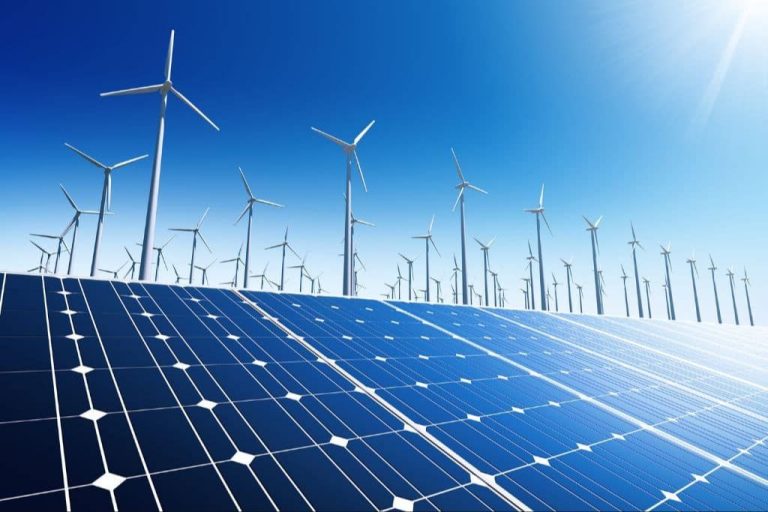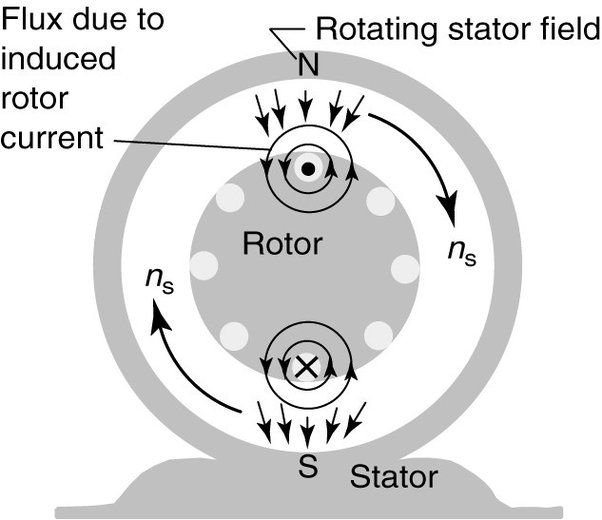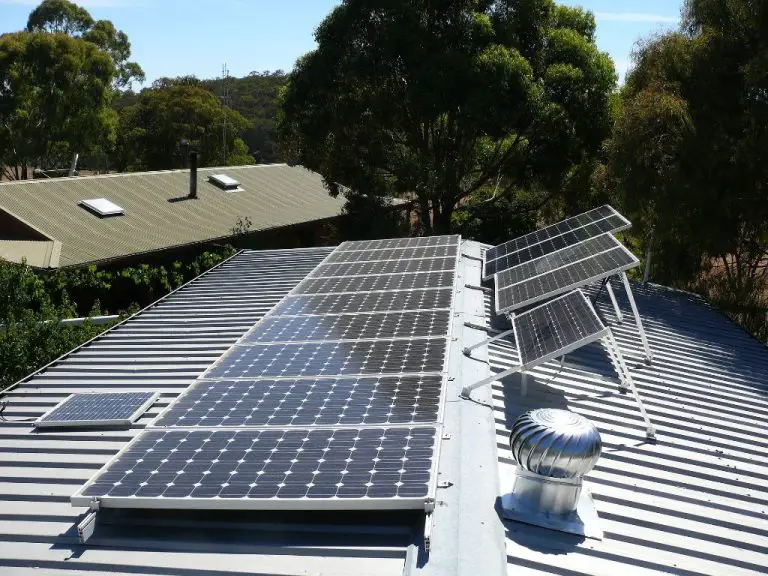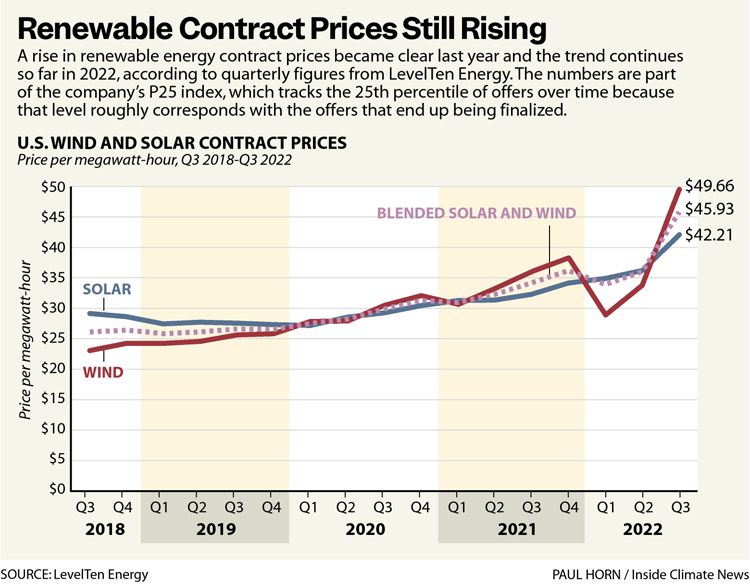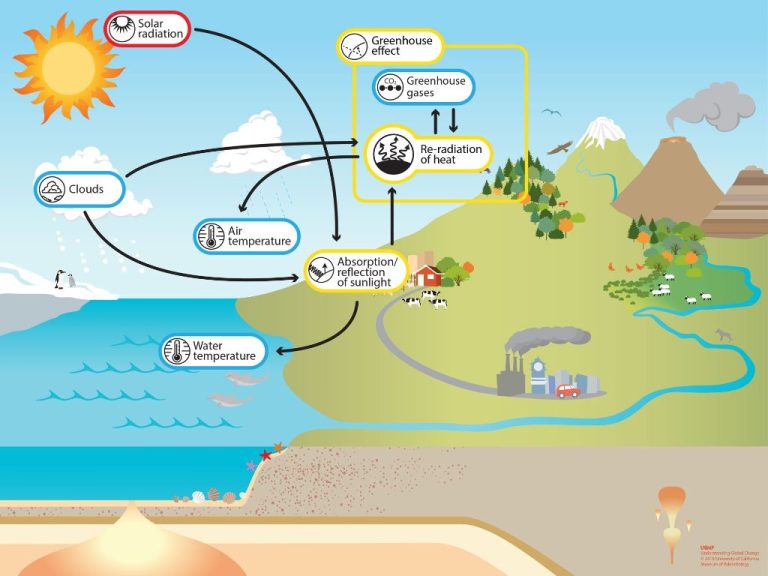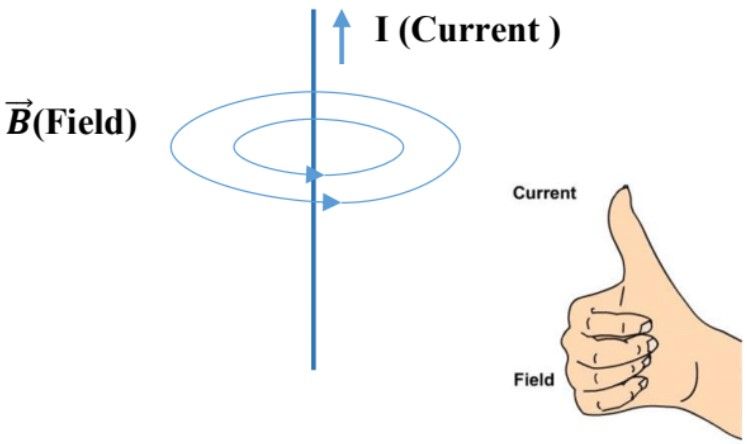How Long Does Carbon Cycle?
The carbon cycle is the process through which carbon moves through the Earth’s various systems, including the atmosphere, biosphere, oceans, and geosphere. Carbon is a fundamental building block of all life on Earth, and the cycling of carbon between both living organisms and nonliving parts of the planet plays a vital role in regulating Earth’s climate and environment.
Understanding the carbon cycle is crucial because human activities such as burning fossil fuels and deforestation have significantly impacted the natural movement of carbon. The addition of excess carbon, primarily in the form of carbon dioxide, into the atmosphere through human actions has major implications for global warming and climate change.
The carbon cycle maintains a natural balance through processes such as photosynthesis, respiration, and decay. However, human disruptions to this balance could lead to catastrophic and irreversible environmental changes if not properly addressed. Studying the carbon cycle allows scientists to model and predict the effects of human carbon emissions over time.
Sources of carbon emissions
The primary sources of carbon emissions are:
Burning fossil fuels: The burning of coal, oil, and natural gas for energy production and transportation releases massive amounts of carbon dioxide into the atmosphere. Fossil fuels accounted for over 90% of carbon dioxide emissions from human activities in 2019, making this the largest source.
Deforestation: Cutting down forests leads to carbon dioxide release when trees are burned or decompose. Deforestation is the second largest source of carbon emissions globally.
Industrial processes: Manufacturing of cement, metals, chemicals, and other industrial processes involves chemical reactions that emit carbon dioxide as a byproduct. Approximately 5-10% of global emissions come from industrial processes.
Carbon Sinks
Carbon sinks are the parts of the carbon cycle that absorb and store carbon for long periods of time. The main carbon sinks on Earth are oceans, plants, and soil. Each of these sinks absorbs massive amounts of carbon:
Oceans – The oceans are estimated to absorb about 25% of annual global human-caused CO2 emissions, making them the largest active carbon sink. CO2 dissolves into seawater, where it undergoes chemical reactions to form carbonic acid. Much of this dissolved inorganic carbon remains in the oceans for hundreds to thousands of years.
Plants – Through photosynthesis, plants absorb CO2 from the atmosphere and incorporate the carbon into their tissues as biomass. The carbon remains locked in plants until the organic matter decomposes or burns. Forests and other vegetation currently store large amounts of carbon as biomass.
Soil – Soil contains more carbon than plants and the atmosphere combined. Organic carbon is stored in soil organic matter through the decomposition of plant and animal residues. This carbon can remain in soils for decades to millennia, making soil a major reservoir in the global carbon cycle.
Movement of carbon through reservoirs
Carbon is continuously exchanged between different reservoirs on Earth in what is known as the carbon cycle. The main carbon reservoirs involved in this cycle are:
- The atmosphere – Carbon exists here mainly in the form of carbon dioxide gas (CO2). Carbon moves between the atmosphere and other reservoirs through natural processes like animal respiration, volcanic eruptions and human activities like burning fossil fuels.
- Oceans – The oceans hold enormous amounts of carbon, mainly in the form of dissolved CO2 and living and dead marine organisms. CO2 is exchanged with the atmosphere at the ocean’s surface.
- Plants and soil – Plants absorb CO2 from the air through photosynthesis and incorporate the carbon into their tissues. The carbon then passes into the soil as plants decompose. Soil organic carbon is the largest terrestrial carbon pool.
- Rocks and fossil fuels – Over millions of years, dead plant and animal matter can turn into fossil fuels like oil, natural gas and coal locked away beneath the Earth’s surface. Carbon from the atmosphere and oceans is slowly captured into marine sediments and lithified into rock.
On land, carbon dioxide cycles through photosynthesis and respiration, moving between plants, animals, soils, the atmosphere, and oceans. In the ocean, marine organisms absorb dissolved CO2 to build skeletons and shells. When organisms die, their carbon rich remains sink to the ocean floor, eventually forming carbon-rich sedimentary rocks. Over millions of years, tectonic activity may move these rocks to the Earth’s surface, releasing CO2 through weathering and volcanism. This completes the global scale movement of carbon between major reservoirs.
Human impact on the carbon cycle
Humans have dramatically influenced the global carbon cycle, mainly through activities that have increased atmospheric carbon dioxide levels. The most significant human impact has been the burning of fossil fuels like coal, oil, and gas. When fossil fuels are burned, carbon that has been stored underground for millions of years is released into the atmosphere as carbon dioxide gas.
Since the Industrial Revolution began in the mid-1700s, the concentration of atmospheric carbon dioxide has increased by over 40%. This rapid rise is directly linked to human emissions. Burning fossil fuels for energy generation, transportation, heating, manufacturing, and other purposes has caused enormous amounts of long-buried carbon to re-enter the atmosphere.
In addition to fossil fuel combustion, deforestation by humans is reducing major terrestrial carbon sinks. Forests absorb and store significant amounts of carbon through photosynthesis. When forests are cleared or burned, their stored carbon is released. The rapid deforestation of tropical rainforests and other areas has further contributed to the spike in atmospheric carbon dioxide.
Global carbon cycle timescales
Carbon moves between the atmosphere, oceans, soil, rocks and living things in a number of processes that operate on different timescales. Some carbon exchanges happen quickly, while others take place over millions of years.
Fast carbon exchanges occur between the atmosphere, ocean surface and land biosphere through natural processes like photosynthesis, respiration, decay and dissolution. This rapid circulation of carbon happens over timescales of days to centuries as plants and animals absorb CO2 during photosynthesis and release it back by breathing. The mixing of surface ocean waters also circulates carbon on the order of decades.
Slow carbon exchanges involve geological processes that can lock away carbon for millions of years. Fossil fuel deposits, for example, formed from organic matter that was buried over long timescales and converted through heat and pressure into coal, oil and natural gas. Carbonate minerals like limestone and dolomite are also created by gradual sedimentation and lithification of calcium-rich ocean organisms. Once buried deep underground, this geological carbon can remain trapped for millions of years.
Human activities like burning fossil fuels and deforestation have disrupted the natural carbon cycle by rapidly moving long-term geological carbon into the active, fast-cycling carbon system. This is increasing atmospheric CO2 levels far faster than slow geological processes can absorb it.
Residence time of carbon in atmosphere
An important aspect of the carbon cycle is how long carbon dioxide remains in the atmosphere before being absorbed into carbon sinks. CO2 molecules can persist in the atmosphere for varying lengths of time, ranging from hundreds to thousands of years, before natural processes remove them. The residence time of CO2 helps determine how much warming it can cause while present.
On average, a single molecule of CO2 exists in the atmosphere for about 5 years before being absorbed into the ocean or vegetation. However, the atmospheric residence time of CO2 released by human activities is much longer due to the large quantities emitted. Studies estimate 20-200 years for recently emitted CO2, and it could take between 300 to 1,000 years for all the human CO2 released until now to fully dissolve into the oceans.
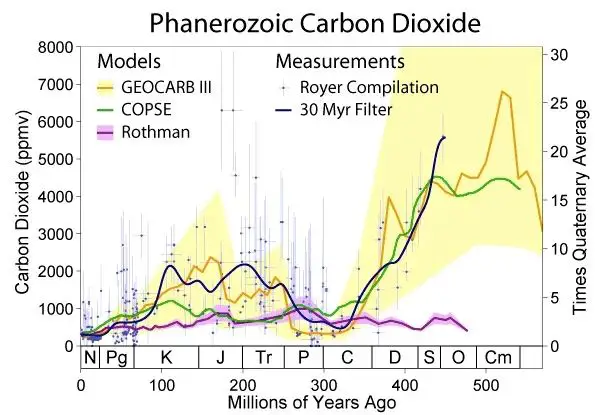
Furthermore, between 15-40% of CO2 emitted now could continue to affect climate for thousands of years, which highlights the long-lasting impact of human carbon emissions. This long atmospheric lifetime allows CO2 to thoroughly mix around the globe, accumulate in concentrations, and cause substantial global warming effects that persist for generations.
Long-term carbon storage
Carbon can be stored in the geosphere for thousands to millions of years. The primary long-term carbon sinks are fossil fuels and carbonate rocks.
Fossil fuels are formed when organic matter from dead plants and animals is buried and transformed through high heat and pressure over geological timescales. Coal, oil, and natural gas all contain carbon that was originally extracted from the atmosphere by living organisms.
When fossil fuels are burned for energy, this geologically-sequestered carbon is re-released to the atmosphere. The carbon in fossil fuel deposits can remain locked away for millions of years if left undisturbed.
Carbonate rocks such as limestone and dolomite are another major reservoir of carbon. Marine organisms like coral and shellfish extract calcium and carbon from seawater to construct their shells and skeletons. Over long periods, these skeletal remains accumulate as sedimentary rock.
The carbon locked in carbonate rocks can remain fixed for millions of years unless the rocks are weathered or metamorphosed, releasing the carbon as carbon dioxide gas.
Implications of human carbon emissions
The carbon cycle operates on timescales ranging from just years to millions of years as carbon moves between the atmosphere, oceans, vegetation, soils and geological deposits. Human activities have significantly impacted this natural carbon cycle by rapidly adding carbon to the atmosphere that had been locked away underground in fossil fuels for millions of years.
When fossil fuels like coal, oil and natural gas are burned for energy, the carbon stored within them combines with oxygen to form carbon dioxide, releasing CO2 into the atmosphere. Deforestation also releases large amounts of carbon dioxide when trees are burned or decay. The rising atmospheric CO2 levels associated with human carbon emissions have far-reaching implications.
Perhaps the most significant impact is on Earth’s climate. Carbon dioxide is a greenhouse gas, meaning it traps heat in the atmosphere. The rapidly accumulating CO2 from human activities is causing the greenhouse effect to increase, driving global climate change. Higher CO2 levels will continue altering temperatures, precipitation patterns, sea levels, ocean acidity, and the frequency of extreme weather events. Climate change affects human health and food security, causes biodiversity loss, melts ice sheets, and leads to many other environmental and societal impacts around the world.
The effects of climate change will continue growing more severe until anthropogenic carbon emissions are reduced to near zero. This demonstrates the urgent need to transition global energy systems away from fossil fuels in order to stabilize the climate system. However, because carbon cycles slowly between reservoirs, the climate impacts of CO2 emissions will persist for centuries even after emissions are slashed. Some level of irreversible climate change is already locked in due to the carbon pollution humans have already emitted.
Conclusion
The carbon cycle is the process through which carbon moves between different reservoirs on Earth, including the atmosphere, oceans, biosphere, and geosphere. Carbon is stored in these reservoirs in various forms such as carbon dioxide, organic carbon, and carbonate rocks.
The residence time, or how long carbon stays in a reservoir before moving to another, varies greatly. In the atmosphere, carbon dioxide can reside for 5-200 years before being absorbed into the ocean or biosphere. Carbon in ocean surface waters mixes more rapidly, cycling in decades to centuries. Deep ocean mixing takes place over 500-1000 years. The geological carbon cycle operates over millions of years, as carbon is buried and released through processes like fossil fuel formation, volcanic activity, rock weathering, and subduction.
Human activities, especially fossil fuel combustion and deforestation, have significantly increased the amount of carbon cycling through the system. The excessive input of carbon dioxide into the atmosphere is of particular concern, as CO2 can persist in the atmosphere for centuries to millennia. Cutting carbon emissions, protecting natural carbon sinks like forests and oceans, and developing carbon capture technology are important to restore balance to the global carbon cycle.

